

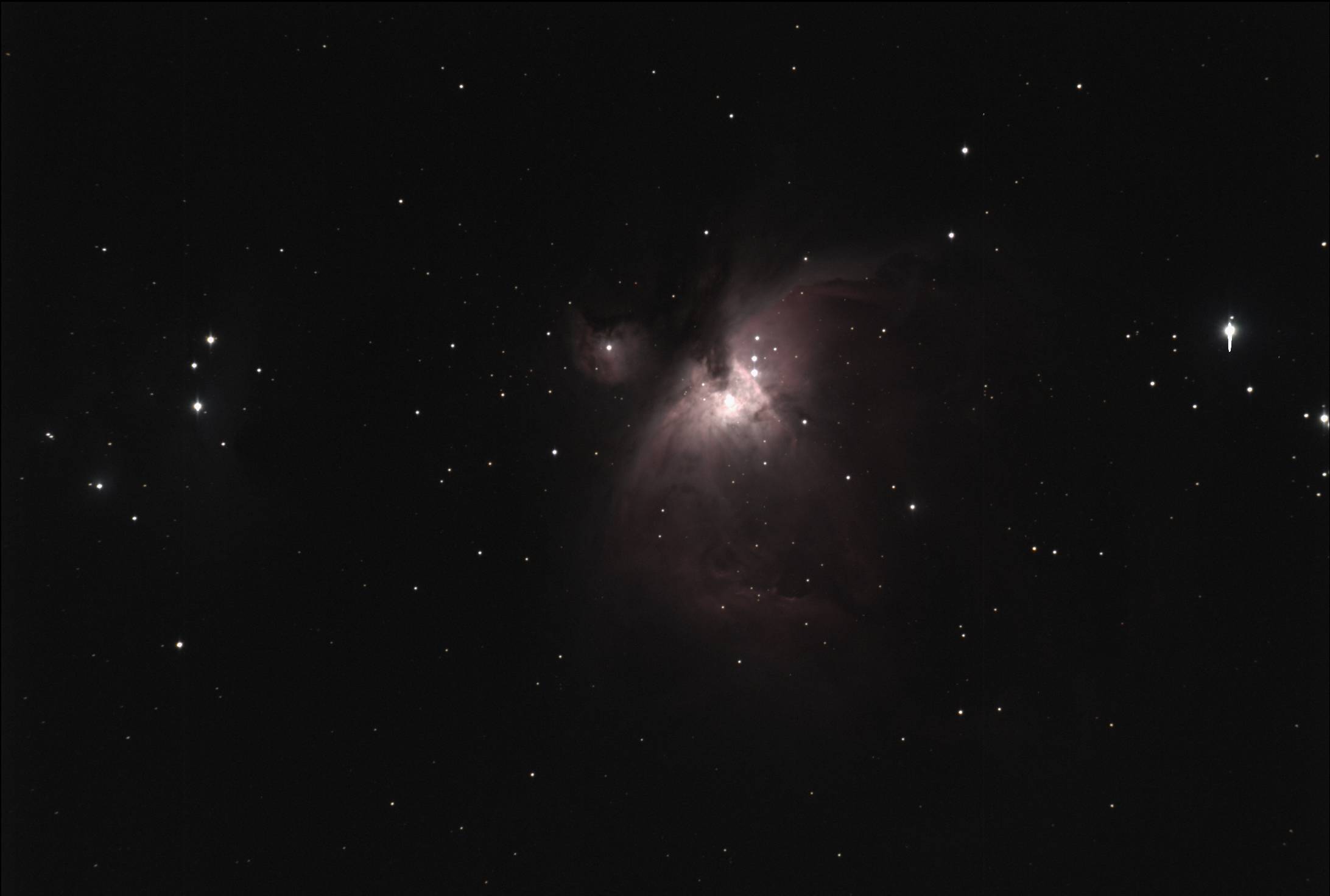

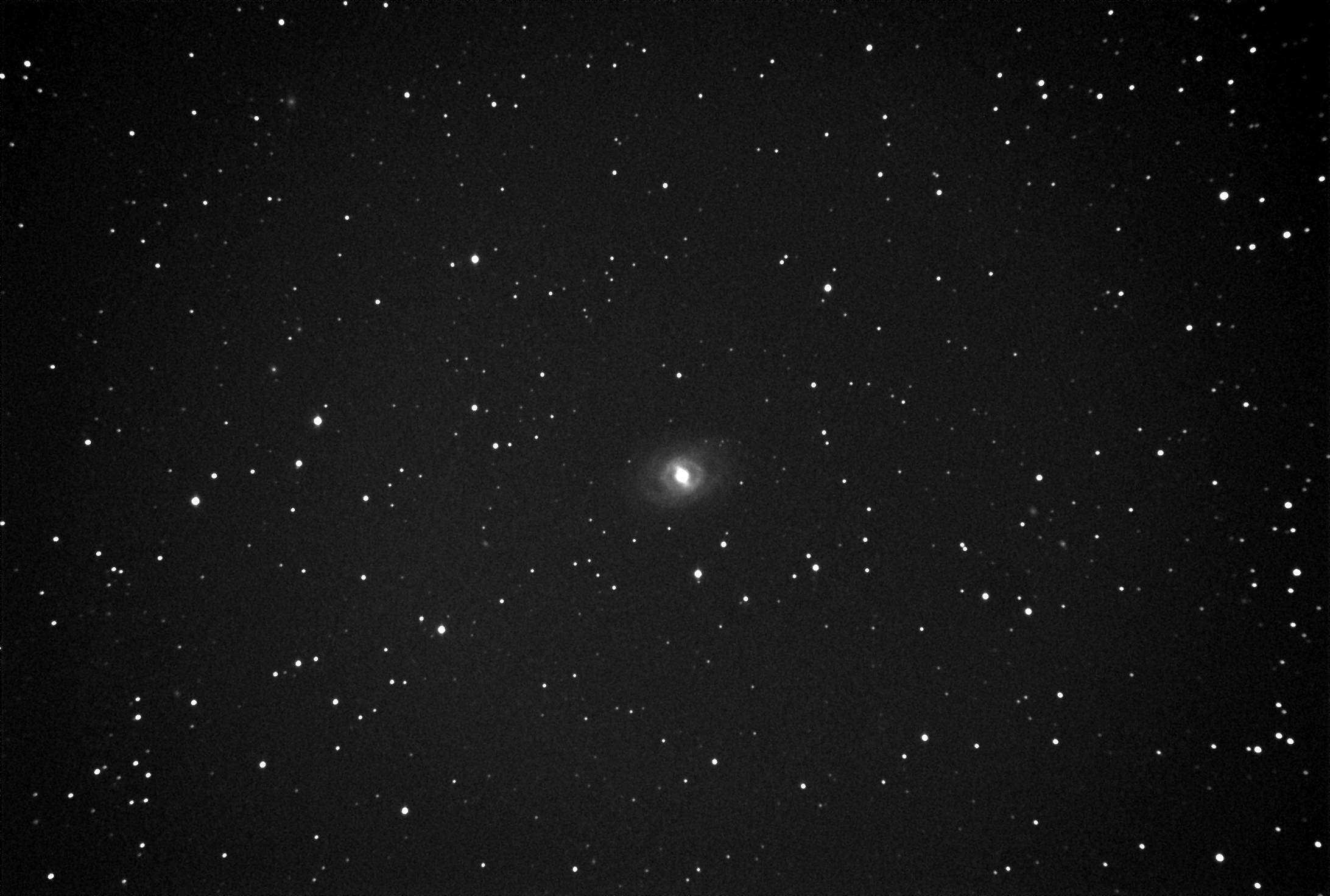

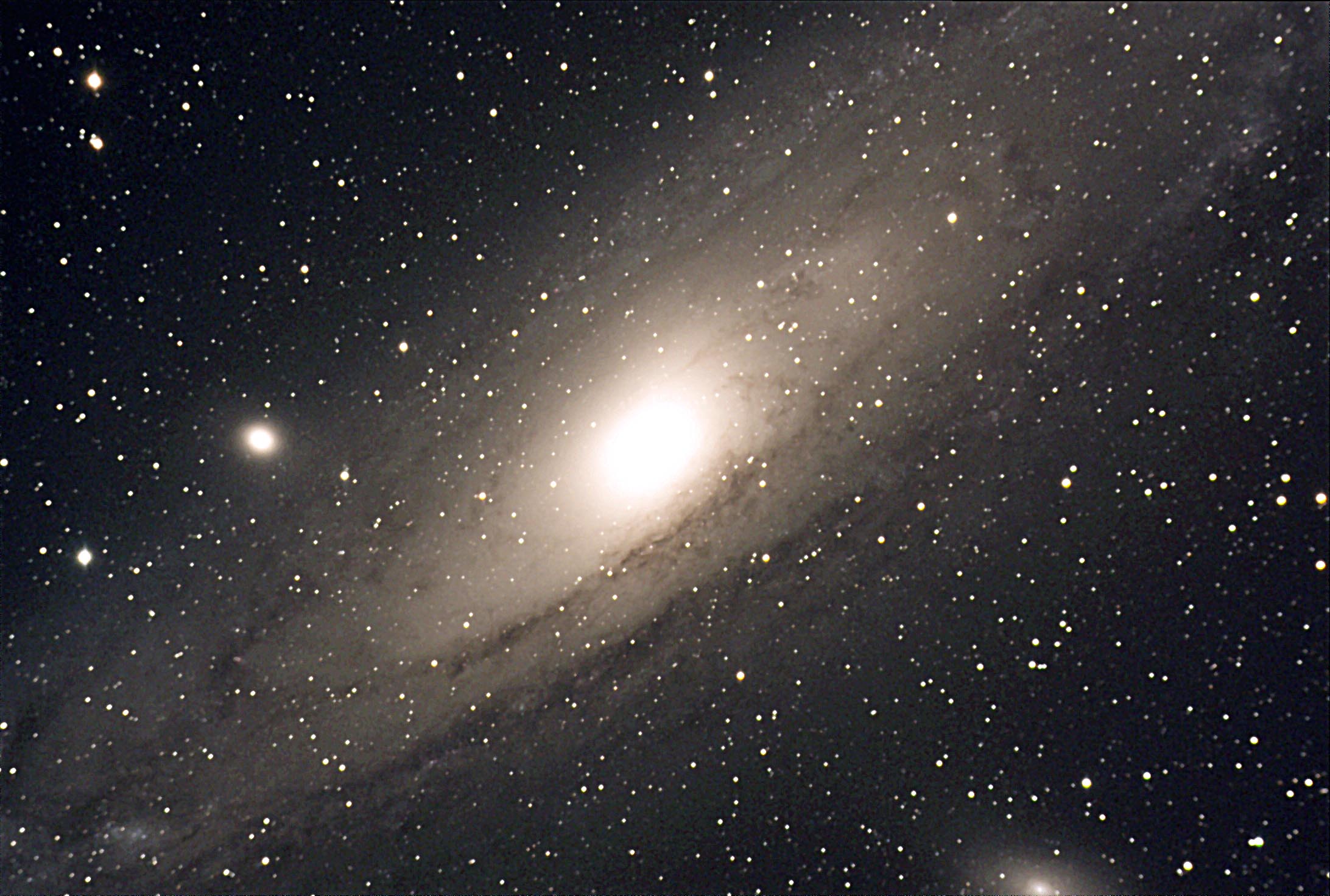
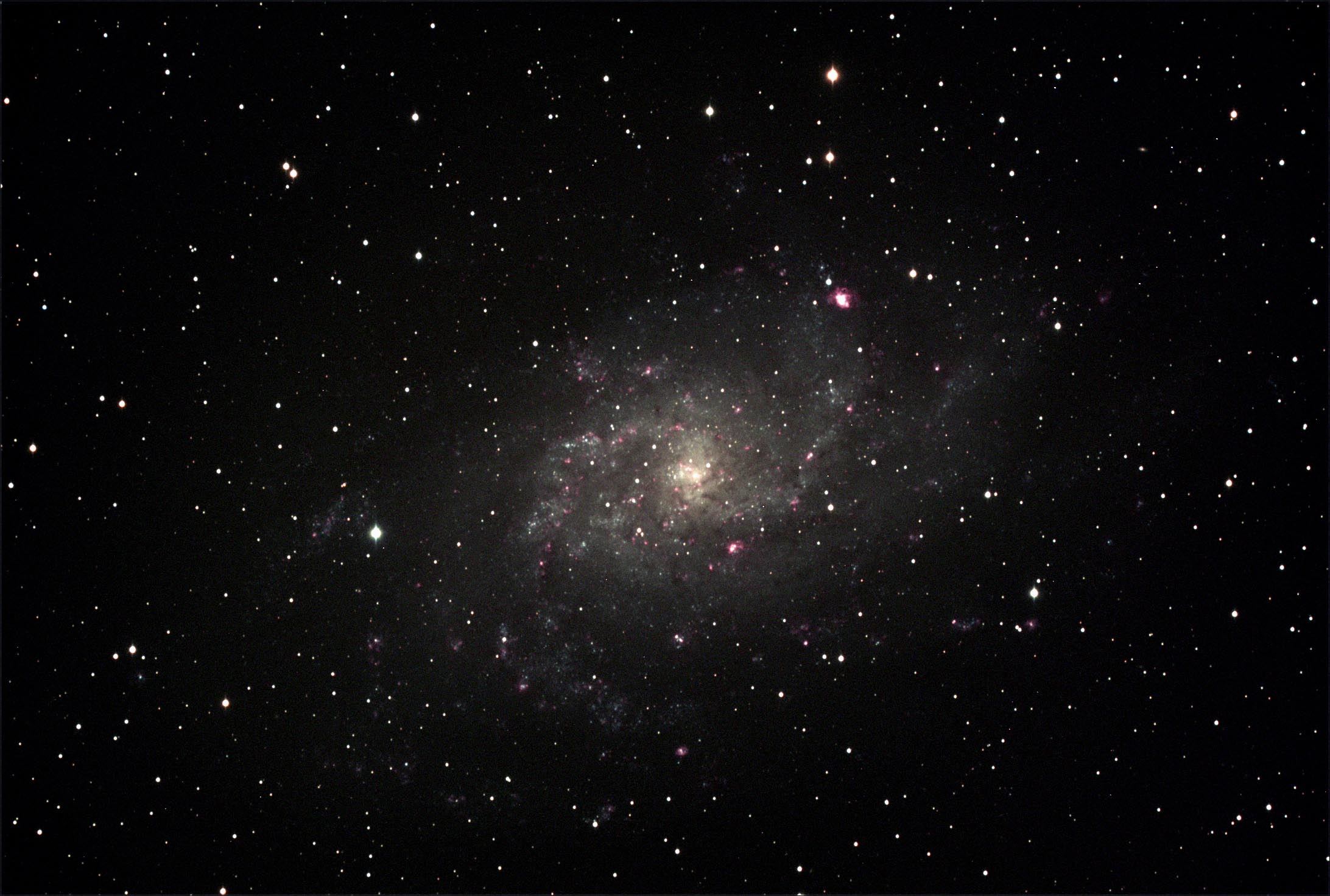


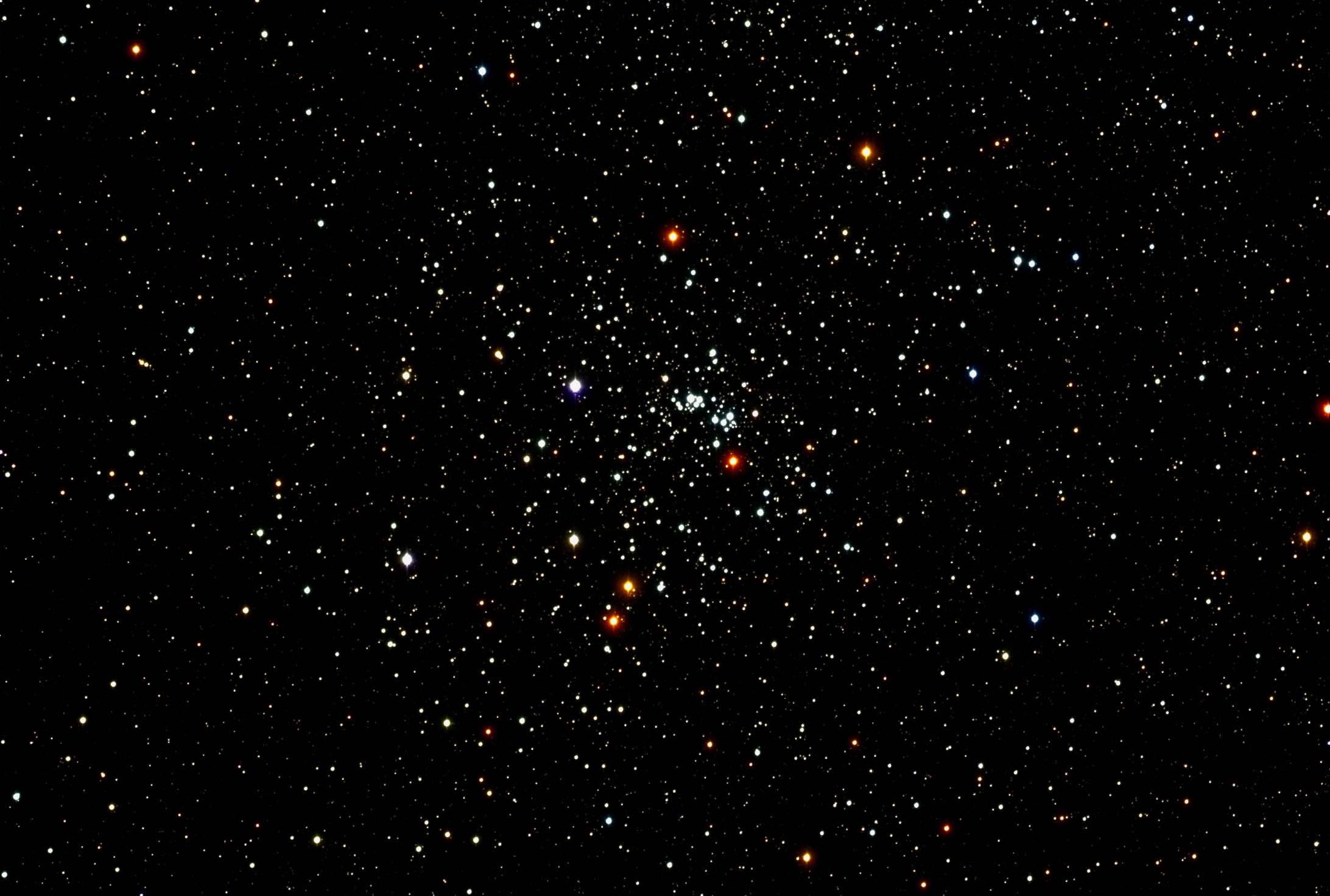
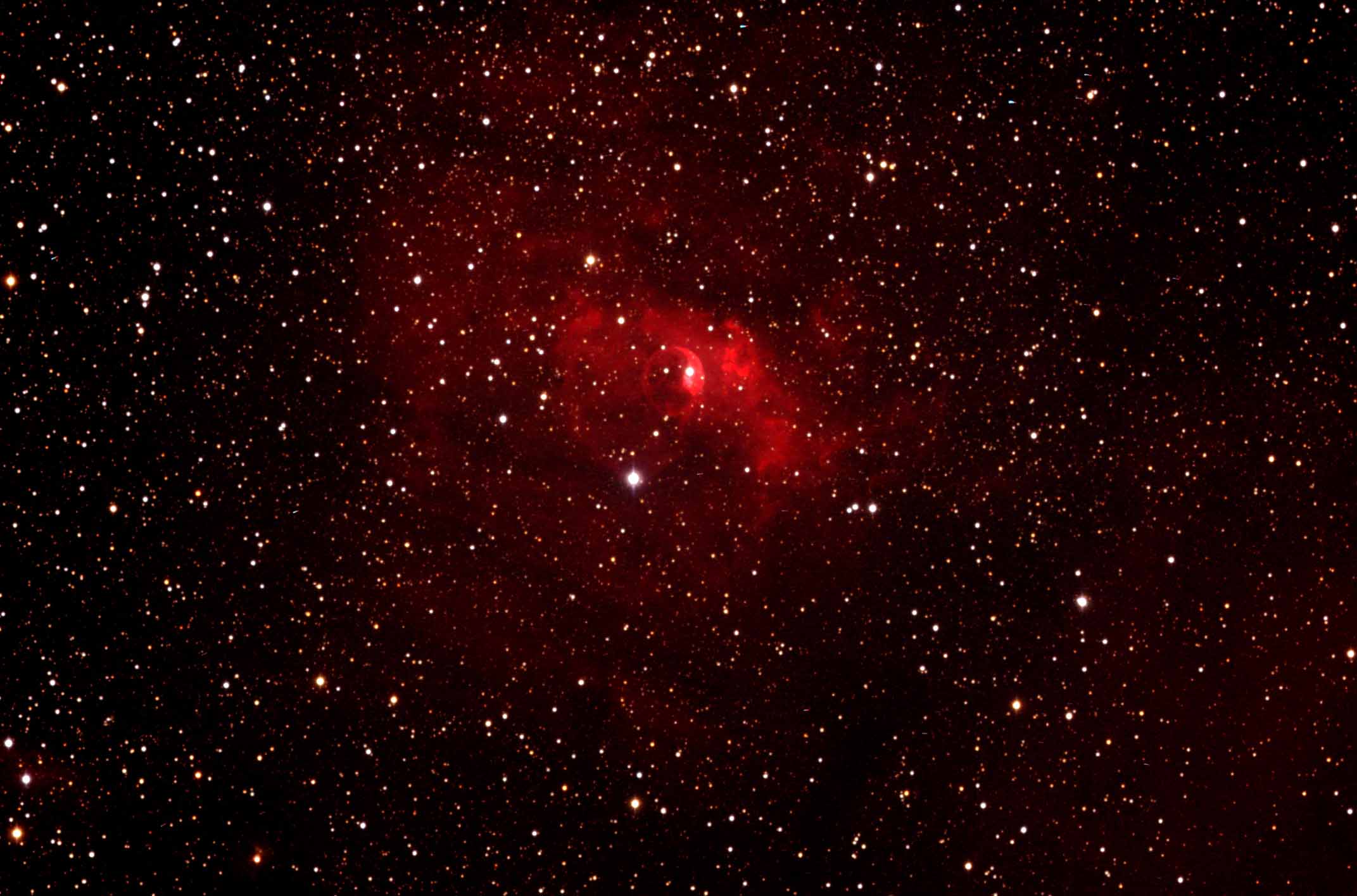

Sum 21min each LHRGB. Taken at f7.7 with a QSI 532 wsg camera.
Sum 5x60s Luminance, 5x60s each RGB, 6x300s HalphaTaken at f7.7 with a QSI 532 wsg camera.
Sum 6x300s Halpha taken at f7.7 with a QSI 532 wsg camera.
The picture has been taken through a filter which only allows light from glowing hydrogen gas through it and shows a region of active star formation. In the centre can be seen clusters of stars formed from the nebula. The central darker region is where the strong winds from the newly formed stars have blown the gas clouds outwards. Darker regions known as Bok globules can be seen in the outer gas clouds. These are regions of cold "dark" dust and gas where star formation is occuring.
Sum 29x60s Luminance, 18x60s each RGB, 10x180s Halpha. Taken at f7.7 with a QSI 532 wsg camera.
I used the William Optics Field Flattener IV for the first time here. From the measurements taken from this image, the F ratio has been changed from f6.3 to f7.7, even though it says it is a reducer on it!! This was not unexpected and I am very happy with how flat the field is in this image. A close up taken with the CGE1400 can be found on the CGE pages.
The red/pink areas are Hydrogen emmision regions, like the Orion Nebula (M42) in our galaxy.
Sum 60x15s Luminance, 15x60s each RGB. Taken at f7.7 with a QSI 532 wsg camera.
This is an open cluster.
15x60s each RGB. Taken at f7.7 with a QSI 532 wsg camera.
The star in the "ring" is a hot large young star. The winds from this star are shaping the gas around it into the pattern seen. The gas is predominately hydrogen.
It is interesting to look back at the last image that I took of M31 with the 8"LX200 and my Canon 350 camera two years ago. This can be found on the Classic 8" LX200 page.
Both the Andromeda Galaxy and M33 (next image) are part of the local group of galaxies, of which our galaxy is a member.
Sum of 20 x 3s luminance plus 20 x 4s for each of R, G & B filters, QSI 532ws camera at f6.3
It was a clear and very cold night, -3'C. This is the first picture taken with the FLT98. The CGE mount was used.
Sum of 10 x 60s luminance only, QSI 532ws camera at f6.3
The aim tonight was to try the polar alignment feature in PemPro. I was really impressed with this software, it worked well and was easy to use with clear instructions. The star shapes here are very good indeed. Test runs with 3 minute unguided exposures were also very good, however, the wind was a problem tonight so I used shorter exposures to aquire this image.